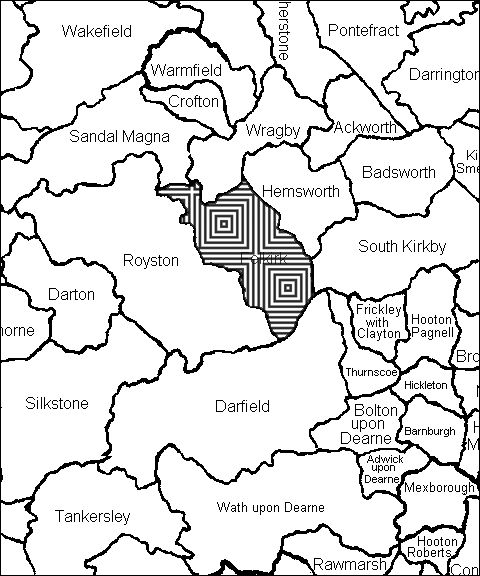Robert may have moved to Felkirk at the time of the release of monastic lands following the Dissolution of the Monasteries by Henry VIII. Nostell Priory, just to the north of Felkirk, was dissolved in 1540 and Monk Bretton Priory, a short distance to the west, was closed down in November 1538. Both had extensive lands in the area. Alternatively, Robert and his forebears could have lived in Felkirk Parish for generations. Without further evidence, it is impossible to say, as parish records were only kept from 1538 onwards.
In the years following the Dissolution, lands and properties changed hands at an alarming rate as speculators sought to expand their power base and/or wealth. It must be remembered, though, that all lands were ultimately held by the reigning monarch and were granted to the major landholders who then sub-let them piecemeal. For example, in 1549 Sir Thomas Gargrave acquired the following:
Manor of Havercrofte & 24 messuages, 12 cottages, & a windmill with lands in the same & in Preston, Kynnesley, Hymmesworth, South Hendley, Cold Hendley, Ryle, Brereley, Derfeld, Hoytroyde, Ruston, Herdwyke, Felkyrk, Preston Jakelyn, Wakefeld, & Stanley.
In 1580 another huge transfer of property in the area is recorded, from Henry Hickforde, gent, & Robert Payne to Cottonius Gargrave, gent...1300 messuages, 1000 cottages, 10 watermills & 10 windmills in Stanley, Hemsworth, Havercroft, Ryhill, Badsworth, Hiendley, Ackworth.
The Manor of Havercroft was formed from the confiscated lands of Nostell Priory. Robert junior was living in Havercroft in 1604, but all we know is that Robert senior lived somewhere within Felkirk parish which would include Havercroft, Ryhill, South Hiendley, Brierley, Grimethorpe, and Shafton. Interestingly, Sir Thomas Gargrave’s property dealings invariably mention an associate named Thomas Darley who may have been the supervisor referred to in Robert’s Will.
